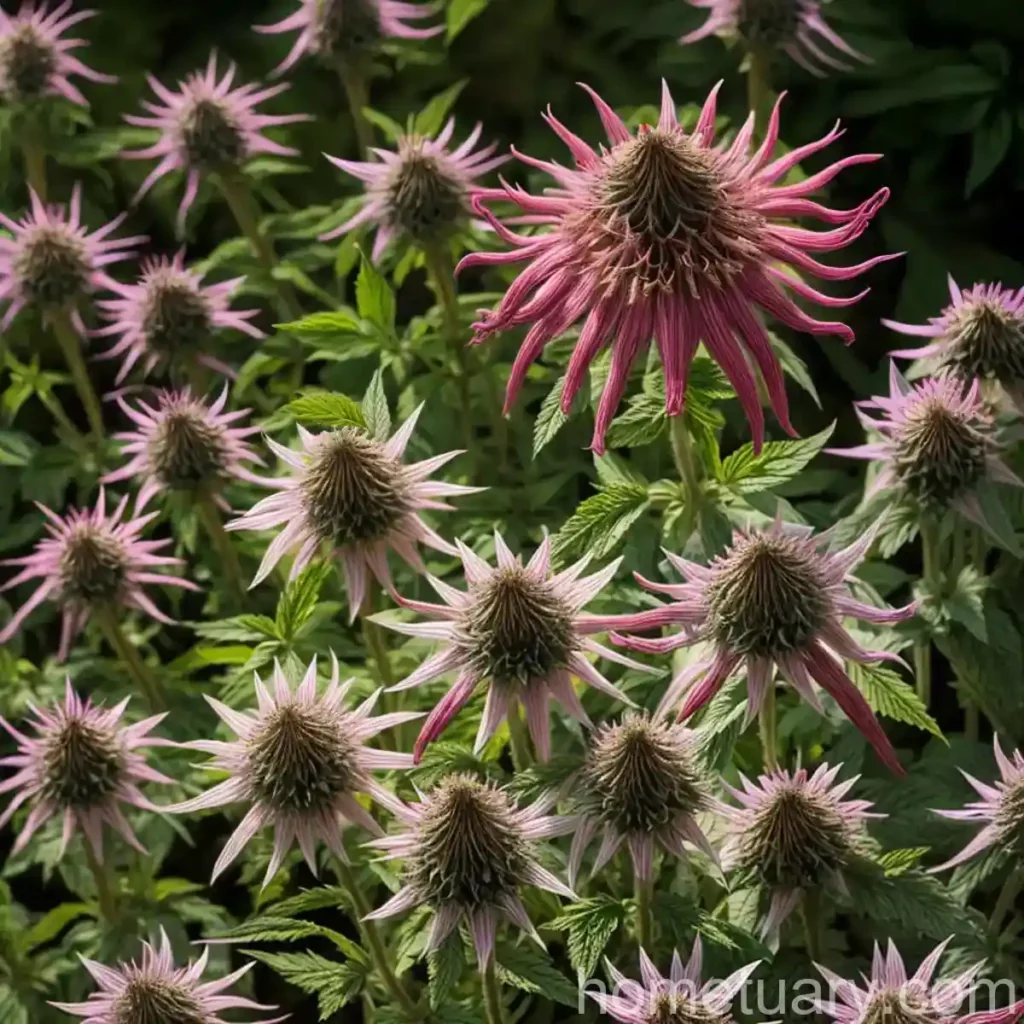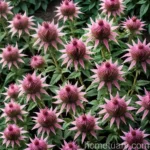The Versatile Bee Balm (Monarda ‘Mahogany’)

Bee balm, scientifically known as Monarda ‘Mahogany’, is a charming and versatile plant that can be a delightful addition to any garden. This article will discuss in detail the various aspects of this plant, including its culture, uses, water and sunlight requirements, fertilizer and soil preferences, pruning techniques, propagation, as well as common diseases and pests. Additionally, we will explore some fun facts about bee balm and provide valuable tips for its maintenance and care.
What is Bee Balm (Monarda ‘Mahogany’)?
Bee balm, a member of the mint family (Lamiaceae), is a popular perennial herbaceous plant known for its vibrant and showy flowers. The Monarda genus comprises several species, with ‘Mahogany’ being one of the attractive varieties. This plant is native to North America and is often referred to as Oswego tea, horsemint, or bergamot.
Key Takeaways – Bee Balm (Monarda ‘Mahogany’)
Before delving into the specifics, let’s take a look at the key takeaways when it comes to the charming bee balm plant:
- Plant Name: Bee Balm (Monarda ‘Mahogany’)
- Family: Lamiaceae
- Genus: Monarda
- Species: Unknown
- Common Names: Oswego tea, horsemint, bergamot
- Plant Type: Perennial herbaceous plant
- Maintenance Level: Moderate
- Water Requirements: Average water needs
- Sunlight Needs: Full sun to partial shade
- Soil Preferences: Moist, well-drained soil
- Pruning: Regular deadheading recommended
- Propagation: Division in spring or fall, or seeds in fall
- Uses: Culinary, medicinal, ornamental
- Popularity: Widely grown in gardens for its attractive flowers
- Common Diseases: Powdery mildew, leaf spot
- Common Pests: Aphids, spider mites
Culture
Understanding the culture and requirements of the bee balm plant is essential for successful cultivation. Let’s examine the various aspects of its culture.
Water
Bee balm thrives in evenly moist soil and benefits from consistent watering, particularly during dry spells. However, it’s crucial to ensure that the soil is well-drained to prevent waterlogging, which can lead to root rot.
Sunlight
When it comes to sunlight, bee balm performs best in full sun to partial shade. While it can tolerate partial shade, ample sunlight generally promotes better blooming and overall plant vigor.
Fertilizer
For optimal growth and flowering, bee balm benefits from a balanced, all-purpose fertilizer applied in spring, as new growth emerges. It’s advisable to follow the manufacturer’s instructions regarding the application rate and frequency.
Soil
The ideal soil for bee balm is fertile, humus-rich, and well-drained. A slightly acidic to neutral pH range (6.0-7.0) is generally favorable for this plant. Amending the soil with organic matter can improve its texture and fertility.
Pruning
Pruning bee balm is a simple task that can help maintain the plant’s health and appearance. Deadheading, which involves removing spent flowers, promotes prolonged blooming and prevents the plant from self-seeding excessively. Additionally, cutting back the stems in late spring can encourage bushier growth and more compact habit.
Propagation
Bee balm can be propagated through division or seeds. Dividing the plant in spring or fall is an effective method to rejuvenate crowded clumps and create new plants. Alternatively, collecting and sowing the seeds in fall can yield new seedlings the following spring.
Container Popularity
Bee balm is a popular choice for container gardening due to its attractive flowers and relatively compact growth habit. It can bring vibrant color and pollinator activity to patios, balconies, and small garden spaces.
Container Common Diseases
When grown in containers, bee balm may be susceptible to certain diseases, particularly if the growing conditions are suboptimal. Common container diseases that can affect bee balm include root rot and powdery mildew.
Disease Diagnosis
Diagnosing plant diseases can be challenging, but careful observation of symptoms such as wilting, discoloration, and unusual growth can provide valuable clues. It’s essential to address any disease issues promptly to prevent their spread.
Common Pests
In addition to diseases, bee balm can face pest pressure, with common culprits including aphids and spider mites. Regular monitoring and early intervention can help prevent pest infestations from causing significant damage to the plant.
Botanist’s Tips
For those interested in cultivating bee balm, here are some tips from botanists and experienced gardeners:
- Provide Adequate Air Circulation: This can help reduce the risk of powdery mildew, a common issue for bee balm.
- Monitor Watering Closely: Overwatering can lead to root problems, so it’s important to find the right balance.
- Encourage Pollinator Visits: Bee balm is a magnet for pollinators, so consider planting it near vegetable gardens or fruit trees to boost pollination.
Fun Facts
Here are some intriguing and lesser-known facts about bee balm:
- The leaves of bee balm can be used to make aromatic herbal teas.
- Bee balm’s vibrant flowers are not only visually appealing but also attract bees, hummingbirds, and butterflies to the garden.
- The plant’s striking blooms can range in color from shades of red, pink, and purple to white.
- Certain species of bee balm were historically used by Indigenous peoples for various medicinal purposes, such as treating colds and fevers.
Links to External Resources
Plant Name: Bee Balm (Monarda ‘Mahogany’)
Before we conclude, here are some external resources that provide valuable information on bee balm cultivation, uses, and maintenance:
In conclusion, bee balm (Monarda ‘Mahogany’) is a captivating plant with numerous ornamental, culinary, and ecological benefits. Its rich history, vibrant blooms, and versatility make it a beloved choice for gardens and landscapes. By understanding its cultural requirements, effective maintenance practices, and potential challenges, enthusiasts can cultivate healthy and flourishing bee balm plants, adding beauty and biodiversity to their outdoor spaces.















